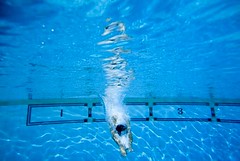Highlights from “Teaching First-Year Students” Conversation – What Is Deep Learning?
 On April 1, the CFT held a conversation on teaching titled “Teaching First-Year Students: Cognitive Challenges of the First Year.” About twenty-five faculty, staff, and graduate students participated in the discussion. Panelists at the session were Doug Christiansen (Dean of Admissions), Susan Kevra (French, American Studies), and Adam List (Chemistry).
On April 1, the CFT held a conversation on teaching titled “Teaching First-Year Students: Cognitive Challenges of the First Year.” About twenty-five faculty, staff, and graduate students participated in the discussion. Panelists at the session were Doug Christiansen (Dean of Admissions), Susan Kevra (French, American Studies), and Adam List (Chemistry).
One of the questions posed during the discussion was the following: If memorization is shallow learning, then what does deep learning look like in various teaching contexts? Below are answers suggested by workshop panelists and participants in response to this question, as summarized by CFT assistant director Derek Bruff.
Panelist Adam List pointed to the difference between algorithmic problem solving and applied problem solving. Algorithmic problem solving involves accurately following known procedures to solve problems of certain types. Students can often succeed at this kind of problem solving by following “recipes” they have memorized. Applied problem solving is that which requires more than just following procedures. It involves selecting appropriate procedures and adapting those procedures to work in the context of particular problems. We might call this creative or adaptive problem solving.
One participant claimed that high schools focus too much on teaching algorithmic problem solving and not applied problem solving. This poses a challenge for first-year students making the transition from high school to college. Some will say things like “That test question wasn’t on the homework!” as a complaint because they don’t see the difference between these two types of problem solving.
Panelist Doug Christiansen noted that some students approach their admissions essays algorithmically, trying to follow some kind of a pattern likely to get them into Vanderbilt. Doug noted that the admissions team looks to “triangulate” evidence of a student’s potential, comparing admissions essays with letters of recommendation and the roles the student played in high school organizations.
Other phrases used in reference to deep learning included conceptual learning, writing skills, intellectual curiosity, and critical thinking. In the sciences, critical thinking sometimes means being able to ask and answer the question “Does this answer make sense?” at the end of a problem. In other disciplines, critical thinking implies the ability to construct an argument for a position.
For more on teaching first-year students, see the CFT’s teaching guide on first-years.
Image: “Diving in” by Flickr user Powerhouse Museum / Creative Commons licensed

Leave a Response